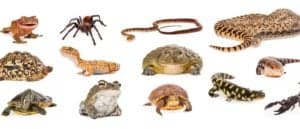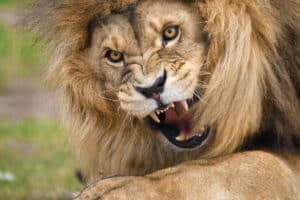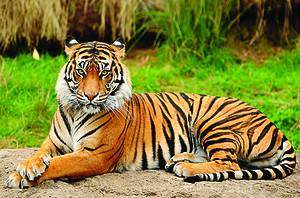
Hackensack town hall offers plenty of information regarding exotic animal ownership.
©Andrew F Kazmierski/iStock via Getty Images
According to the World Population Review, a study revealed that 47.7% of New Jersey residents own at least one pet. Many modern-day young adults prefer pets to children because it is cost-effective, and animals rarely grow into backtalking teenagers.
Dogs and cats are the most popular pets, but the idea of owning an animal that is a bit more exotic piques the curiosity of many. Have you ever wondered what it would be like to own a raccoon, skunk, or fox? If these animals are comfortable with people, can they be considered pets?
In New Jersey, it is legal to own some exotic animals, with legal permission. Let’s dig into some exotic animals New Jersey residents can own, how they can obtain them, and what’s required to care for these animals.
Exotic Animal Ownership in NJ
To own an exotic animal in N.J., it requires both money and paperwork.

Tree frogs are popular pets for owners interested in a non-interactive animal.
©Dave Denby Photography/Shutterstock.com
Costly
Exotic animals range from small animals, birds, reptiles, fish, marsupials, and farm animals. They are not like traditional cats and dogs that need merely food, water, and a few walks to keep them healthy. Exotic animals are not fully domesticated and require customized treatment and diets to meet their needs.
Additionally, owners must find an exotic animal veterinarian to tend to their new pet for check-ups and health emergencies. Normal veterinarians may not be educated on exotic animals and finding an exotic animal veterinarian can be difficult. They can also be slightly more expensive than regular vets.
Several exotic pets need terrariums to simulate their natural habitat. Additionally, reptiles like chameleons require specific levels of humidity to keep them healthy. Without it, they may quickly grow sick or have trouble shedding. Their diet of crickets must be dusted with calcium powder, so they receive proper nutrition. Neglecting any one of a dozen situations may lead to health issues.
Exotic animals are not fully domesticated, and they are not comfortable being indoors. They may cause a lot of damage by chewing or scratching furniture while they adjust to inside living.
Permits
Exotic pet parents need permits for legal ownership. N.J. residents must have the Individual Hobby Wildlife Species Possession Permit. The permit costs around $20, with larger animal permits costing $50. Residents are given the permit on the day they purchase their exotic animal.
Permits expire December 31st, unless stated otherwise. Pet owners must renew their permits and licenses with the NJ Department of Environmental Protection’s Fish and Wildlife Program.
Finding Exotic Pets in N.J.
While it is legal to own exotic animals, it is not legal to take a wild animal out of its natural environment. Wild animals are protected by wildlife laws and housing one illegally will result in hefty fines of $500 or more.
Potential pet parents should purchase exotic animals from reputable exotic animal breeders, or official exotic animal locations capable of providing government-approved documentation.
Reputable exotic animal stores in N.J. are:
- NJ Exotic Pets in Lodi
- Garden State Pet Expo
- BM Exotic Pets in Dumont
- Lacey Pet in Forked River
Popular Exotic Pets to Own in N.J.
Let’s get into the fun part: what animals can N.J. residents own?
Skunks
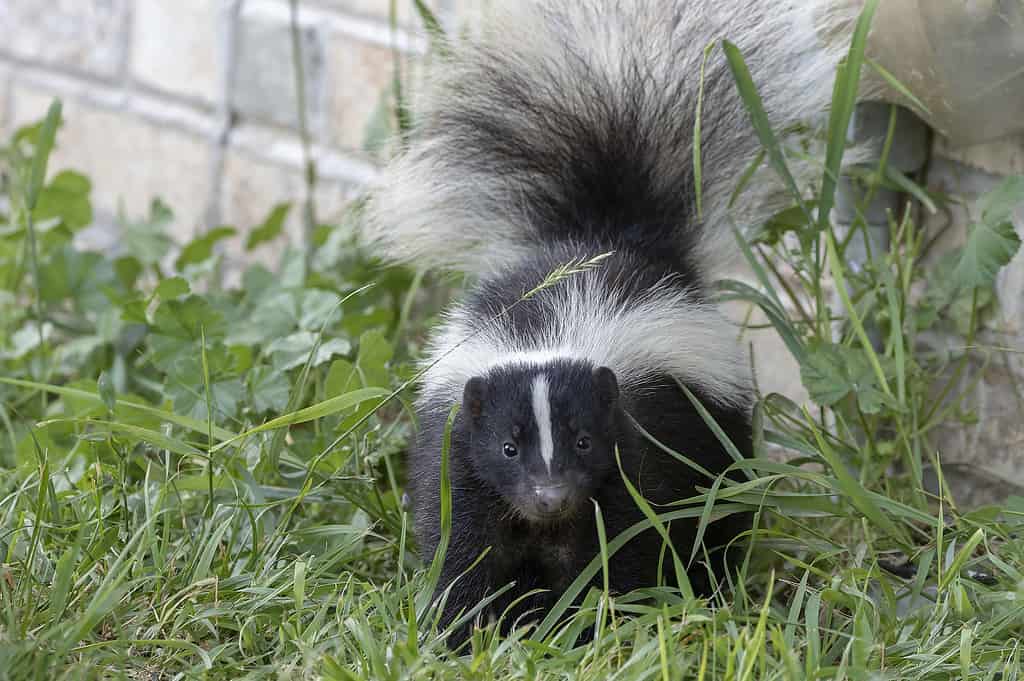
Pet skunks have their scent glands removed to reduce spray risk.
©Karel Bock/iStock via Getty Images
| Permit Required | Weight (pounds) | Lifespan | Care Level | Diet | Litter Trained |
| Yes | 6-14 | 15 years | Moderate | Omnivores | Yes |
Skunks love to dig and scratch. They need plenty of stimulation or else they will damage tables, couches, beds, and other furniture. Skunks are active during dawn and dusk and learn their parent’s schedule.
Skunks eat a combination of proteins like eggs, chicken, insects, and nuts, with assorted vegetables.
Pet parents should spend plenty of time with their pet skunks to develop a strong bond. Skunks may become affectionate with their owners, allowing them to be carried and brushed regularly.
All skunks have their spray glands removed at an early age before being sold to parents.
Opossums
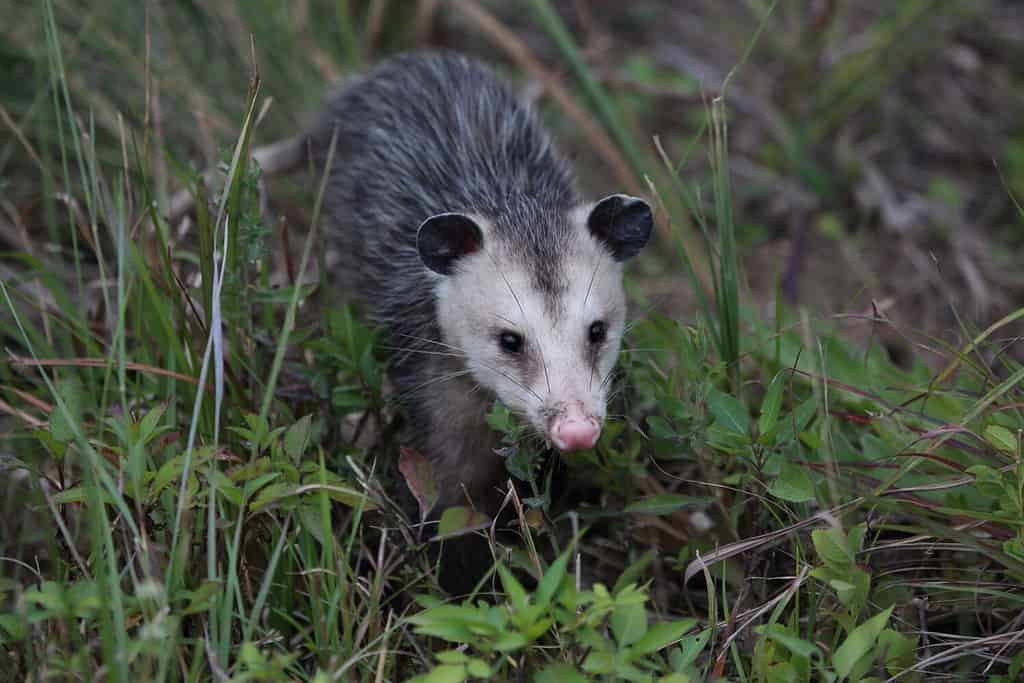
Owning an opossum is challenging. They are difficult to care for and are not comfortable interacting.
©Arend Trent/Shutterstock.com
| Permit Required | Weight (pounds) | Lifespan | Care Level | Diet | Litter Trained |
| Yes | 4-12 | 8 years | Difficult | Omnivores | Possible |
Opossums are not domesticated and are difficult to handle as pets. They need a lot of space to climb and explore and do not perform well in cages or confined spaces.
Opossums need a strict diet of insects or healthy protein like eggs and chicken, supplemented with vegetables. Exotic animal suppliers have food for opossums available at their locations.
Unfortunately, opossums do not live very long. In the wild, they typically live three years before succumbing to disease or predators. In captivity, they can live up to eight years, which is brief compared to other animals.
Raccoons
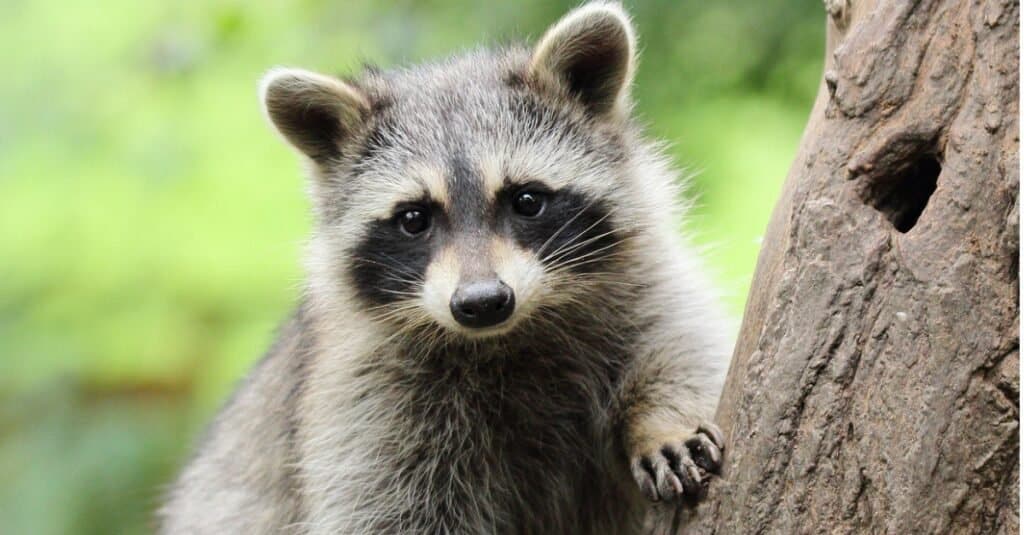
Pet raccoons are a handful to raise but may grow comfortable with people after years of patience.
©iLUXimage/Shutterstock.com
| Permit Required | Weight (pounds) | Lifespan | Care Level | Diet | Litter Trained |
| Yes | 10-20 | 20 years | Medium-Difficult | Omnivores | Possible |
Raccoons are an immensely popular animal to own in N.J. because they are found in almost every backyard. These mischievous little animals love to explore their surroundings and climb onto anything they see. Raccoons require constant supervision, so they do not damage the house with their climbing, scratching, or chewing.
They require a diet of chicken, rabbit, fish, eggs, mealworms, crickets, vegetables, and fruits.
Parents should allow their raccoons to roam the house, offering them a tall cage to sleep in with their toys. With lots of time and attention, raccoons may grow comfortable to snuggle with their owners. However, raccoons will give love bites, which can be painful due to their sharp teeth.
Raccoons should not be left with other pets because they may attack smaller animals as prey.
Kinkajou
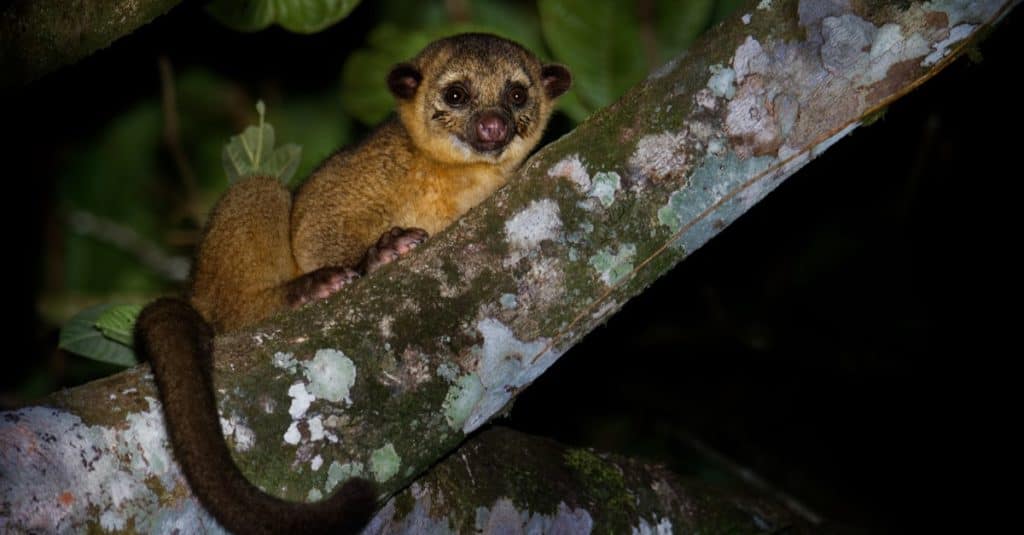
These animals use their tail to hold onto ledges for balance and support while moving through treetops.
©Martin Pelanek/Shutterstock.com
| Permit Required | Weight (pounds) | Lifespan | Care Level | Diet | Litter Trained |
| Yes | 10 | 20-25 years | Difficult | Omnivores | Unlikely |
Kinkajous are small, monkey-like creatures related to raccoons. They live in trees and love socializing with their families.
However, kinkajous are notoriously difficult pets. Their curious nature makes them climb and leap constantly. They possess elevated levels of aggression and bite anyone who comes too close, including their owners. They will throw their food and they are extremely difficult to potty train.
Kinkajous love eating fruits, veggies, lean meats, and insects. Fruits should be offered in moderation because kinkajous are prone to dental disease from high-sugar foods.
Kinkajous are nocturnal and very vocal. Parents should be prepared to wake up to a howling monkey in the middle of the night.
Coatimundis (Coati)
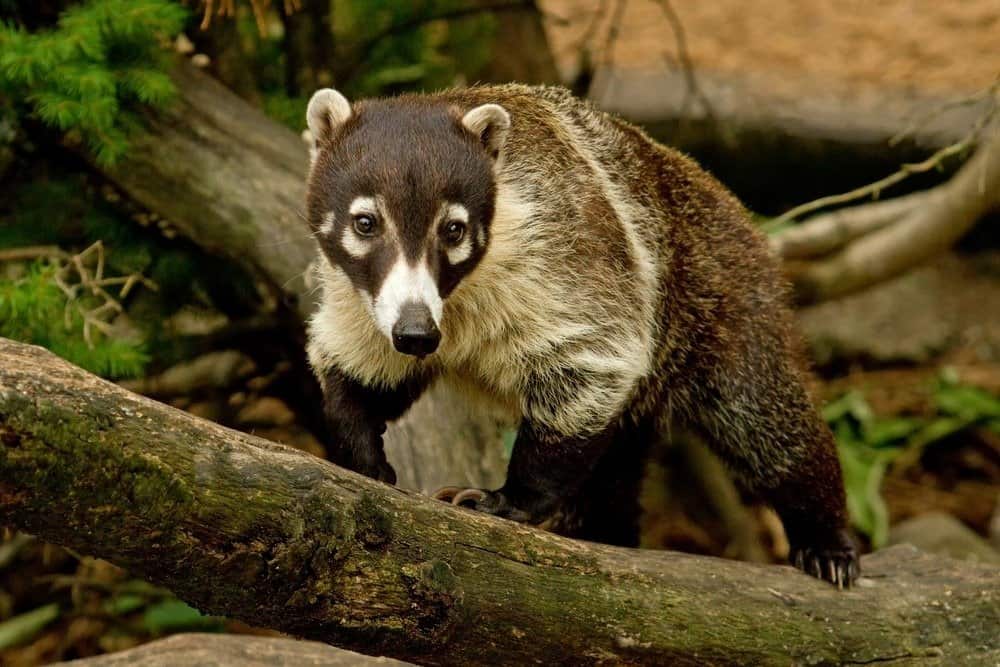
While friendly, coatis have sharp claws and teeth and may accidentally injure their parents while playing.
©Cynthia Kidwell/Shutterstock.com
| Permit Required | Weight (pounds) | Lifespan | Care Level | Diet | Litter Trained |
| Yes | 7-14 | 14 years | Medium-Difficult | Omnivores | Yes |
Coatis are cousins to raccoons, which is easily seen in their long-ringed tails and masked faces. They have a lot of energy and need constant supervision and socialization to keep them active and amused. They do not handle being caged well, needing a lot of space to climb and explore.
Parents are advised to wear thick gloves when handling coatis because their thick claws may leave deep cuts when playing or holding. Coats may also get aggressive if they are not neutered or spayed.
Coatis can be trained slightly more easily than other exotic animals. They learn how to use the litter box and go for walks on a leash.
Their diet consists of insects, lean meats, vegetables, and fruits.
Sugar Gliders

Without a companion or constant socialization, sugar gliders cry and possibly harm themselves.
©Evannovostro/Shutterstock.com
| Permit Required | Weight (pounds) | Lifespan | Care Level | Diet | Litter Trained |
| No | 4 ounces | 10-15 years | Medium | Insectivore | Possible |
Sugar gliders are tiny flying squirrel-like animals that are excellent climbers and love to cuddle. In fact, sugar gliders experience separation anxiety when alone for too long. When buying a sugar glider from a pet store, the staff will recommend buying two so they can keep each other company. Several reports indicate sugar gliders self-harm if they’ve been alone for extended periods.
Despite their overly anxious personalities, sugar gliders are non-aggressive. They are easy to house in a long cage with a hammock and nontoxic liner or litter.
Feed sugar gliders a strict diet of insects, vitamin supplements, and fruits.
Ferrets
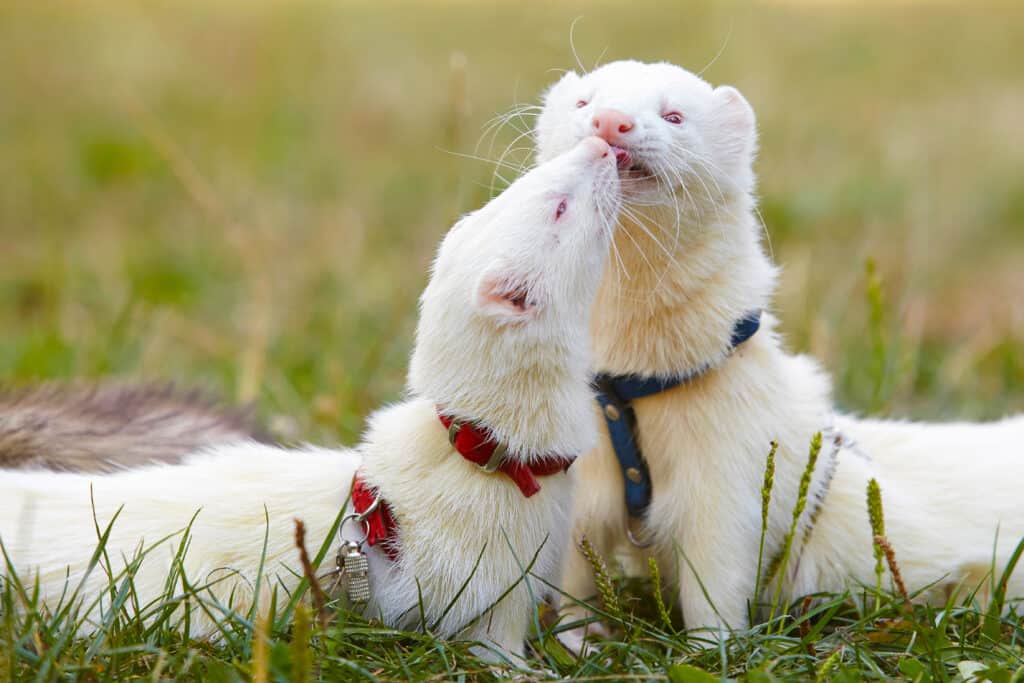
Many ferret owners like to push a leash on their ferrets and take them for walks.
©Couperfield/Shutterstock.com
| Permit Required | Weight (pounds) | Lifespan | Care Level | Diet | Litter Trained |
| Yes | 2-4.4 | 5-10 years | Easy – Medium | Hypercarnivores | Yes |
Ferrets are tiny weasel animals who are notorious for stealing objects and hiding them in dens throughout the house. They will grow loving toward their owners or other ferrets when living together. To prevent ferrets from stealing valuable objects, provide them with several toys and play with them often.
Ferrets are hypercarnivores, meaning they need a strict diet of all meat. A customary practice to feed a ferret is establishing a “frankenmeat,” which is creating a fake animal made from different organs for the ferret to eat.
Because of strong scent glands near their anus, ferrets can produce strong odors. However, these odor issues can be prevented if they are given a healthy, all-meat diet.
Hedgehogs
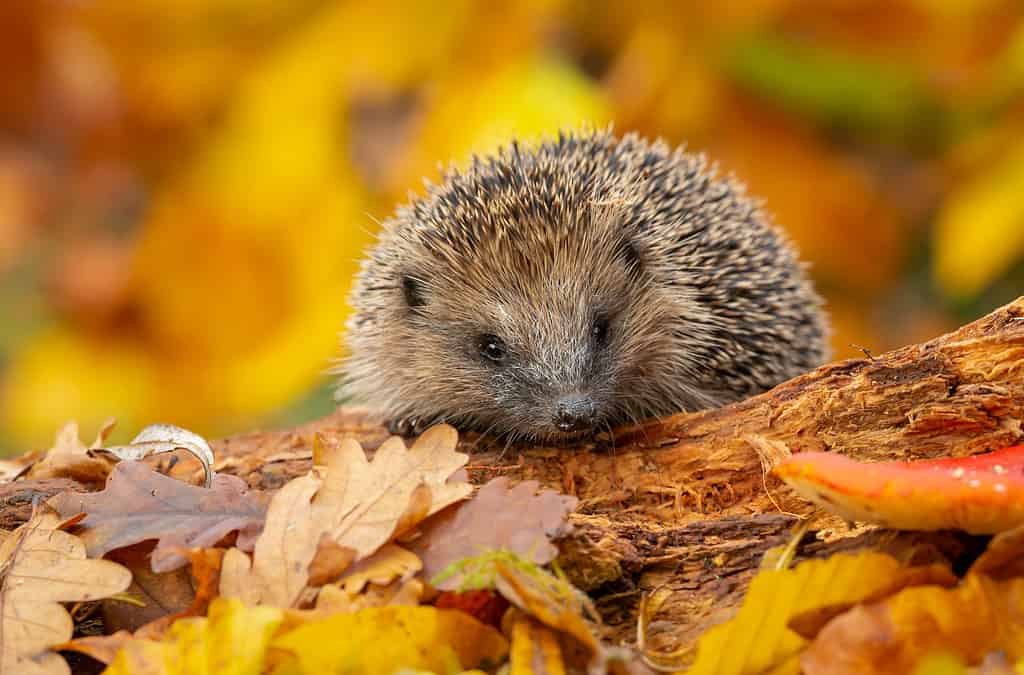
Their quills naturally fall off and are replaced throughout the week, similar to human hair.
©Anne Coatesy/iStock via Getty Images
| Permit Required | Weight (pounds) | Lifespan | Care Level | Diet | Litter Trained |
| Yes | 1-2 | 2-8 | Easy-medium | Insectivore | Yes |
Hedgehogs are adorable little rodents with pointy noses and tiny spines across their body. When afraid, hedgehogs will curl up into a ball, extending their spines to prevent predators from touching or reaching their soft underbelly.
Owners must provide their hedgehog with vitamin powdered insects and supplement powders to balance their diet. Pet hedgehogs are commonly diagnosed with malnutrition because of an improper diet.
Typically, hedgehogs are solitary animals, content with living in a wide cage with several toys, easy access to food and water, and an exercise wheel. Some may enjoy running around in a large hamster ball so they may explore the house. While timid at first with new owners, they will open up to their adoptive parents.
Red and Flying Squirrels

If you want to own a
red squirrel
, get it early in life so he grows less timid of people.
©Sam Robertshaw/Shutterstock.com
| Permit Required | Weight (pounds) | Lifespan | Care Level | Diet | Litter Trained |
| None | Flying: 2.5 ounces Red: 12 ounces | 3-10 years | Medium | Seeds, berries, nuts | Possible |
Squirrels are all over N.J., and everyone has thought of owning one at one point or another. They are small, eat mostly nuts, berries, and seeds, and seem harmless from a distance while watching them race through yards.
Owning a squirrel is not too difficult but does require some patience and attention. Squirrels are mischievous rodents who will climb on anything they see and try to forage food to hide in their cage or somewhere in the house. They are not truly domesticated, so their instincts drive them to forage and store food for winter.
Squirrels can be litter trained, but training must begin at an early age. Others can be taught to perform small tricks like grabbing food, owners must be patient and consistent with the training.
Ostriches
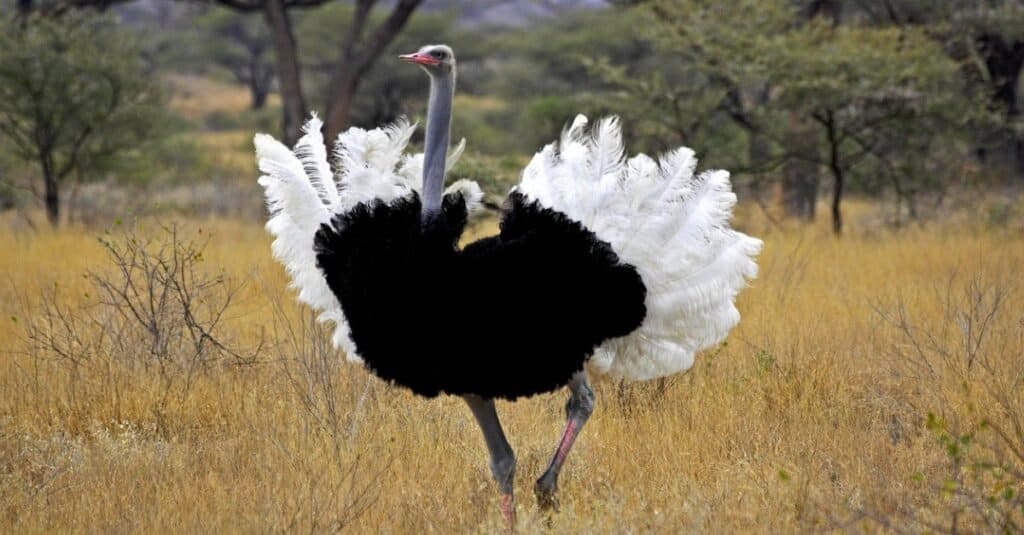
Owners can sell ostrich feathers to companies to costumes, decoration, or clothing.
©iStock.com/slowmotiongli
| Permit Required | Weight (pounds) | Lifespan | Care Level | Diet | Litter Trained |
| No | 250-320 | 30-70 years | Medium-Difficult | Omnivores | No |
That’s right, N.J. residents can own an ostrich without a permit. Ostriches count as livestock, meaning if an N.J. resident has enough space, they may build an ostrich farm to sell eggs or their molted feathers.
Ostriches primarily eat plants but will consume insects, snakes, lizards, and rodents if given the chance. They do not chew their food, so ostriches will consume sand and small rocks to help break down their food in their stomachs.
Be warned, ostriches are not typical pets to play with or use for rides. They are seven-foot-tall birds with a kick strong enough to break bones and cause internal damage. Ideally, ostriches should have plenty of yard space to freely run around and a place they can rest for inclement weather.
Toucan

Toucans need extra permits because they may cause untold damage to the ecosystem if they get out.
©SJ Travel Photo and Video/Shutterstock.com
| Permit Required | Weight (pounds) | Lifespan | Care Level | Diet | Litter Trained |
| Yes | 1.4 | 12-20 years | Expert | Frugivorous | No |
N.J. has strict laws regarding exotic birds. While toucans are legal, extra permits may be required to keep them in a residential area.
Only expert bird enthusiasts should own toucans because they can be a handful to care for. They love playing with their food, flinging it into the air before catching it in their beaks. They are quite chatty and make a lot of noise. Provide toucans with a long, horizontal cage with multiple branches for them to hop.
The toucan diet consists mostly of fruits, but they will also eat insects and rodents.
Also, toucans are extremely expensive to own. Reputable exotic animal places sell toucans for around $4,000-$6,000.
Macaws
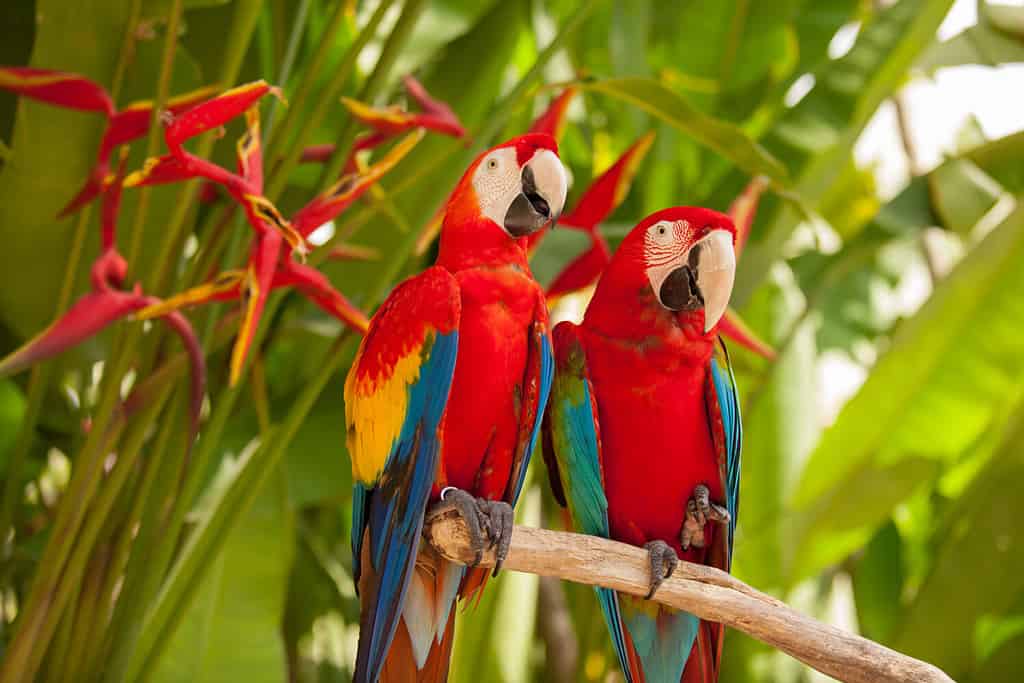
Use thick gloves when handling macaws because their talons are sharp, and their beaks are strong.
©Katia Titova/Shutterstock.com
| Permit Required | Weight (pounds) | Lifespan | Care Level | Diet | Litter Trained |
| Yes | 2-4 | 30-50 years | Difficult | Frugivorous | No |
When it comes to expensive and exotic birds, the macaw is one of the top birds an owner could ask for. Macaws are iconic parrots with red feathers, a large hooking beak, and bright blue feathers on the wings that can mimic the speech of their owners.
Feed macaws a diet of various fruits, nuts, and seeds, interlaced with snails or insects for protein.
On average, a macaw can cost approximately $4,000.
Ball Pythons

These pythons are very friendly and rarely bite, making them perfect for anyone interested in snakes.
©David Kenny/iStock via Getty Images
| Permit Required | Weight (pounds) | Lifespan | Care Level | Diet | Litter Trained |
| Yes | 3-5 | 10-20 years | Beginner | Mice | No |
Ball pythons are an excellent start for first-time reptile enthusiasts who want to own a snake and understand the nuances of terrarium care. Their terrarium should have a warm and cool side to allow them to sunbathe comfortably and cool off when too warm. The basking (warm side) should be 88-92 degrees Fahrenheit with the cooler side being 75-80 degrees Fahrenheit. Use a misting bottle to keep the humidity between 60-70%.
Ball pythons are very curious and will explore their terrarium throughout the day when not regulating their temperature. Some may learn how their terrarium opens and try to climb out to explore the rest of the house.
These snakes are very friendly and will grow comfortable where owners can pet or pick them up. Owners should wash their hands before and after touching the serpent to prevent the snake from getting sick.
Gargoyle Geckos
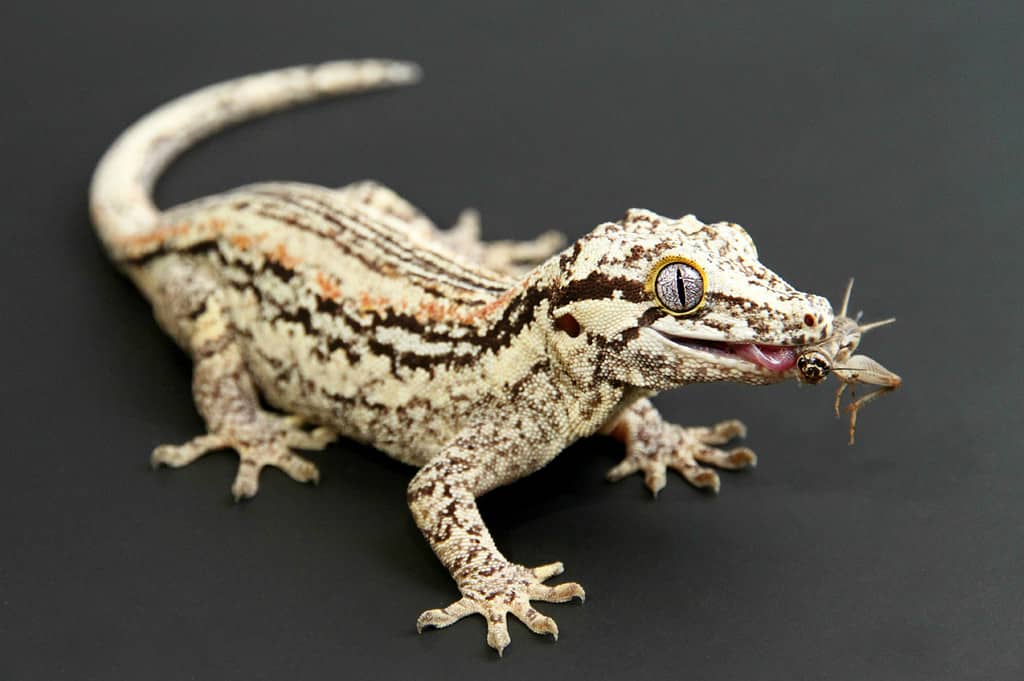
Handle a pet gargoyle gecko with an open hand and never grab them by the tail or limb.
©Naturesauraphoto/Shutterstock.com
| Permit Required | Weight (pounds) | Lifespan | Care Level | Diet | Litter Trained |
| Yes | 65 grams | 15 years | Beginner | Insectivore | No |
Gargoyle geckos are a unique gecko species that love perching in trees and blending into their environment. Their small “horns” over their ears while they perch make them look like small gargoyles watching from above.
They are also remarkably simple beginner reptiles to own because they require little attention and handling and survive very well in a tall terrarium and plenty of food. Their terrarium should have a normal temperature of 72-78 degrees Fahrenheit, with humidity levels between 60-80%.
Provide them with plenty of dusted crickets with a few fruits as treats.
Wallaby

Similar to
kangaroos
, wallabies love to jump around their habitat and explore their environment.
©Shmenny50/ via Getty Images
| Permit Required | Weight (pounds) | Lifespan | Care Level | Diet | Litter Trained |
| Yes | 5-53 | 11-14 years | Medium | Herbivore | Possible |
Wallabies are basically like tiny kangaroos, except you can own one as a pet in N.J. It is better to adopt a wallaby when they are young, giving the owners a chance to closely bond with their new marsupial. As wallabies grow up, they will grow comfortable with people and their owners where they might snuggle some days and go for leashed walks other times.
These marsupials are herbivores, eating grasses, leafy plants, and roots in the wild. They might double as a living lawnmower if left outside for too long, but it is healthier if they are given wallaby-specific food.
Wallabies have a lot of energy to burn off. Owners need a nice backyard with a tall fence to help vent out their excess energy, without them bounding over a gate and escaping. They have extraordinarily long tails that may bump into objects or knock furniture over, but they will avoid causing damage if trained at an early age. While they are young, owners can carry them around in a pouch to simulate what mothers would do for their children. This will strengthen the bond between a wallaby and its owner quickly.
The photo featured at the top of this post is © Itsanan Sampuntarat/iStock via Getty Images
Thank you for reading! Have some feedback for us? Contact the AZ Animals editorial team.



